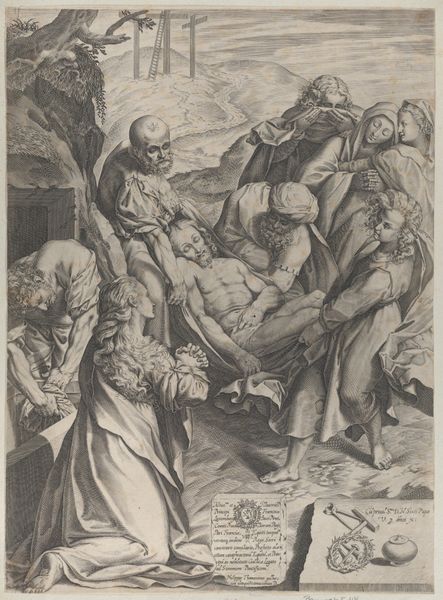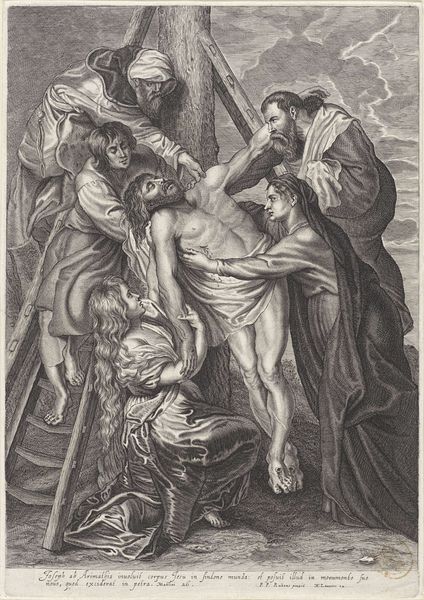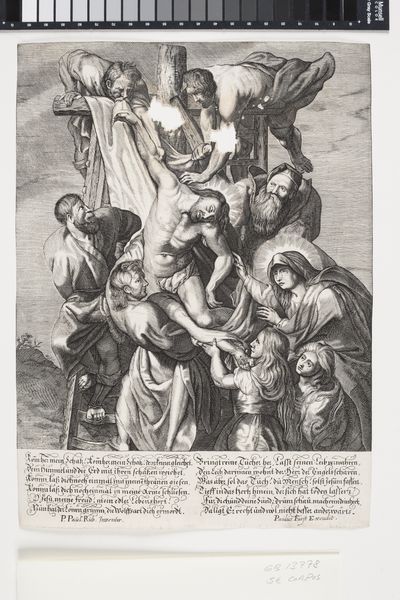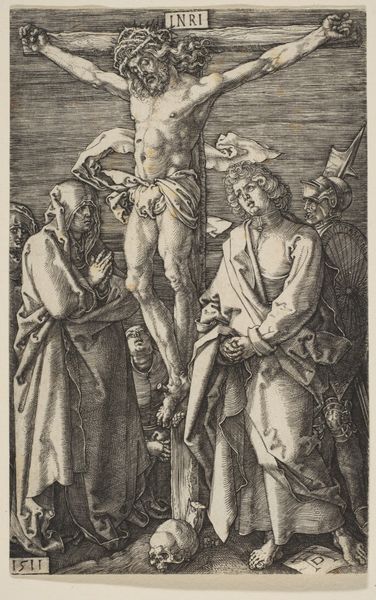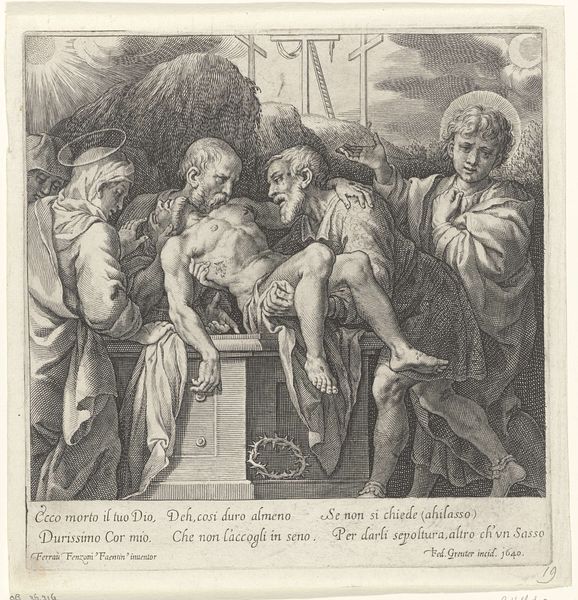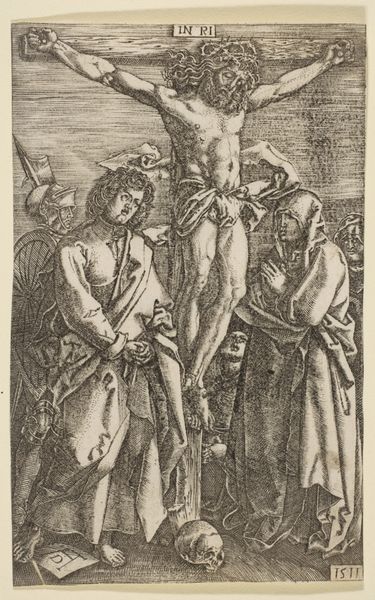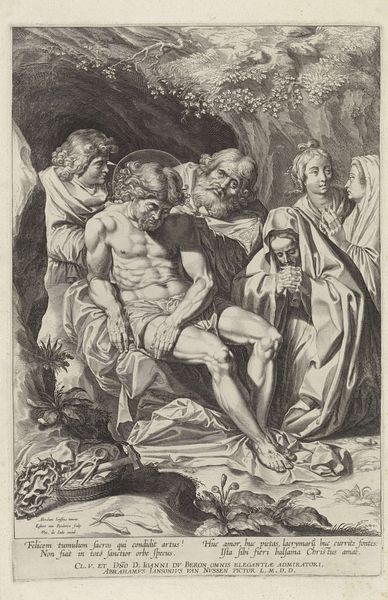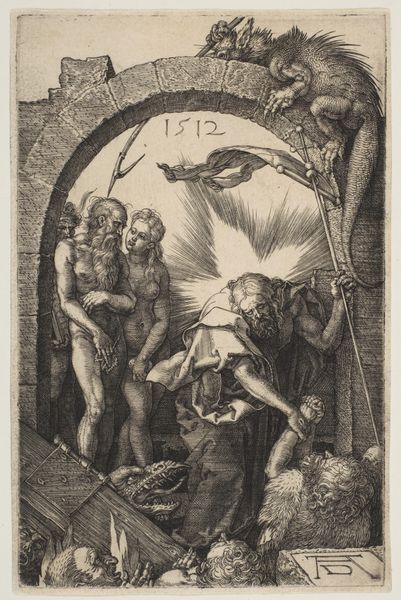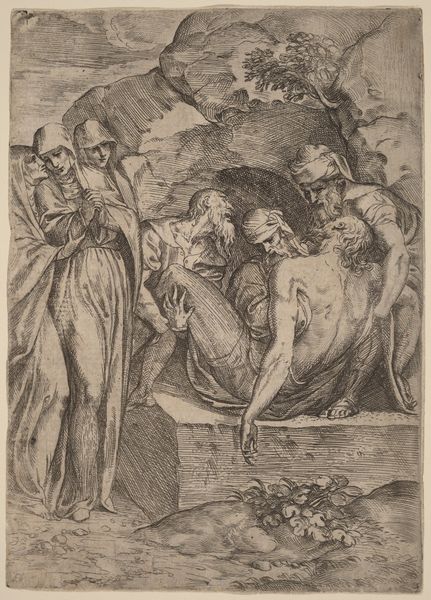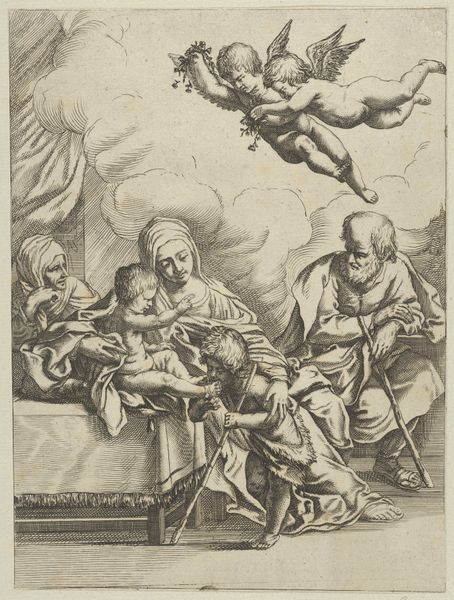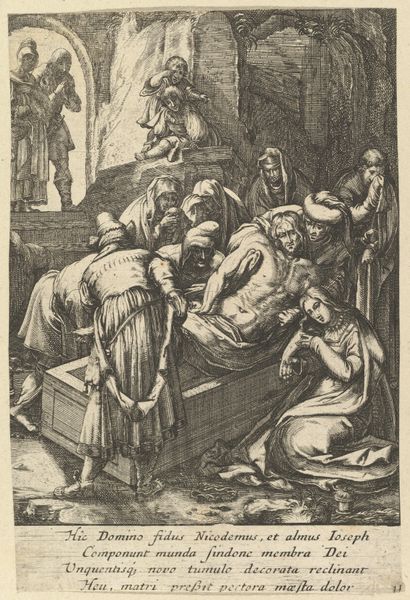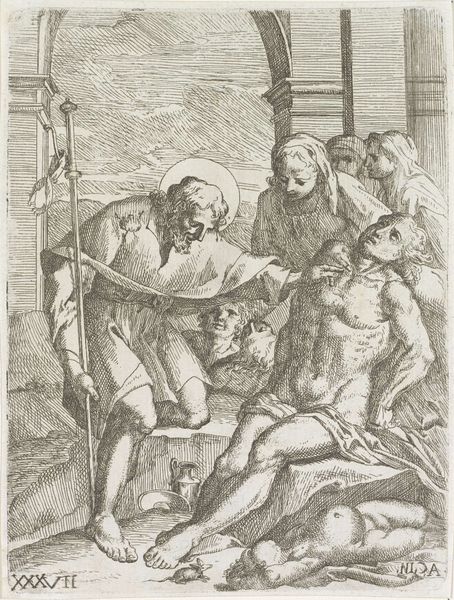
drawing, print, engraving
#
drawing
#
medieval
# print
#
figuration
#
pencil drawing
#
history-painting
#
northern-renaissance
#
engraving
#
christ
Dimensions: Plate: 7 3/16 × 7 5/8 in. (18.3 × 19.4 cm) Sheet: 7 1/2 × 7 15/16 in. (19 × 20.1 cm)
Copyright: Public Domain
Curator: This engraving, "Bearing the Body of Christ," by Hieronymus Wierix, created in 1586, is held at the Metropolitan Museum of Art. The fine lines! It almost has the somber feel of an etching. Editor: My immediate impression is one of intense sorrow. The tight clustering of figures around the central, lifeless Christ intensifies the emotional weight. Curator: Absolutely. Wierix, who was working in Antwerp, was known for the sheer volume of his output and technical skill in engraving. The image likely circulated widely as a devotional print. Notice the lines of the engraving, and how their density shapes not just light and shadow, but the palpable grief etched on each face. Editor: The composition draws the eye directly to Christ's body, rendered with incredible detail. You see the wounds; you see his limpness. The surrounding figures almost act as a frame, highlighting his vulnerability. And from a social standpoint, such art likely functioned as powerful propaganda during the Counter-Reformation. Curator: Precisely! The figures are key. Their expressions are masterfully done. Take the Virgin Mary, for instance, her hands clasped in prayer, the subtle furrows on her brow expressing both grief and a kind of desperate supplication. Editor: I see the careful cross-hatching used to create the tonal range. Wierix really maximized the potential of engraving. In terms of semiotics, consider the symbols present. The halo, of course, represents divinity, yet here, it’s almost overpowered by the sheer human suffering depicted. Curator: I would like to add, engravings were relatively cheap to produce, and accessible to many; the message of this print became widely dispersed across different segments of society. The impact, especially during a period of religious strife, must have been considerable. Editor: This wasn't just art for the wealthy elite. It served a wider purpose. Seeing this reminds me of the incredible adaptability of art; its use for prayer, but equally for wider ideological ends. Curator: Indeed. It shows us the enduring power of art to engage with the rawest of human emotions, whilst serving clear purpose of political commentary, particularly amidst conflict. Editor: A really thoughtful meditation on faith, death, and social structure using simple lines to form profound and striking observations on grief and material accessibility.
Comments
No comments
Be the first to comment and join the conversation on the ultimate creative platform.


